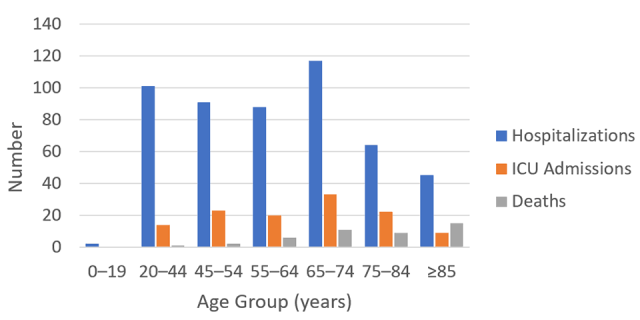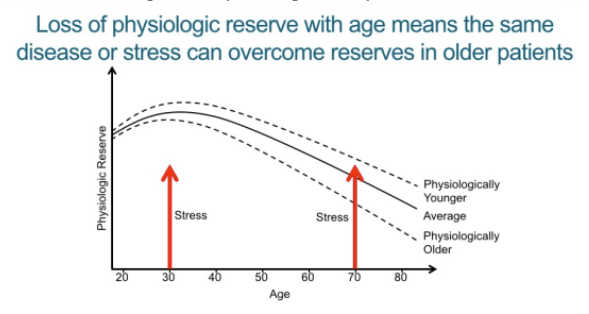Why COVID-19 is a Geriatric Emergency
With Dr. Teresita (Tess) Hogan
The mortality is highest in older adults. Dr. Teresita (Tess) Hogan and a team of Emergency Physicians recently wrote an article on things we should think about as we care for and work to protect our older patients. In this episode, Dr. Hogan and I discuss some of the unique challenges in preventing spread in this population, based on her paper in the Journal of Geriatric Emergency Medicine on COVID-19 in the elderly.
While many younger patients do develop severe disease, the mortality per person is much higher in the elderly. The following graph shows the number of hospitalizations, ICU admissions and deaths (total, not normalized by population numbers) by age from the CDC. Of note, these numbers are changing rapidly, as are screening and management recommendations.

To see the mortality by age group, read this Business Insider article.
The higher mortality is likely largely due to lower physiologic reserve (see image below), and more co-morbidities, particularly cardio-pulmonary disorders.

This Washington Post article has excellent graphic visualizations showing the importance of social distancing to ‘flatten the curve.’
Non-physicians can help protect the elderly in several ways:
- Give them the physical and medical support that they need, but whenever possible avoid contact physically and visits in person. Try video or phone visits instead, especially if they live in nursing facilities or assisted living facilities.
- Check on relatives or patients who have cognitive impairments (such as Alzheimer’s) frequently to assess for any change in mental status or deterioration.
- Check on your elderly relatives or friends to see if they need help navigating obtaining food, groceries, or medications.
- Maintain social distancing practices to avoid spread in your communities. It is possible to be infected and asymptomatic, and still spread it to others.
References
- Image credit [1], [2]
- Michael L Malone, MD, Teresita M Hogan, MD, FACEP, Adam Perry, MD, Kevin Biese, MD, Alice Bonner, PhD, RN, FAAN, Patti Pagel, RN, Kathleen T Unroe, MD, MHA, COVID-19 in Older Adults: Key Points for Emergency Department Providers. Journal of Geriatric Emergency Medicine, Volume 1, Issue 4, March 2020
This entry was posted in General Principles, Infections. Bookmark the permalink.
Hosted By
Dr. Christina Shenvi is an associate professor of Emergency Medicine at the University of North Carolina. She is fellowship-trained in Geriatric Emergency Medicine and is the founder of GEMCast. She is the director of the UNC Office of Academic Excellence, president of the Association of Professional Women in Medical Sciences, co-directs the ACEP/CORD Teaching Fellowship, is on the Annals of EM editorial board, is on the Geriatric ED Accreditation board of governors, and she teaches and writes about time management at timeforyourlife.org.